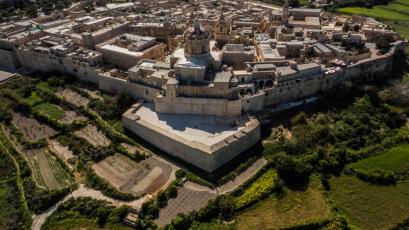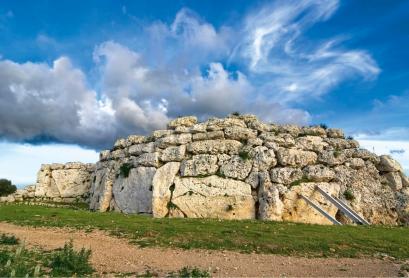Ghar Dalam, literarally translated "Cave of Darkness" is a highly important site as it was here that the earliest evidence of human settlement on Malta, some 7,400 years ago, was discovered. What makes the site even more fascinating is that it was in use during World War II, when it served first as an air raid shelter and later as a fuel storage depot.
The display area consists of two parts: the cave; and the museum, which exhibits a remarkable wealth of finds from animal bones to human artefacts. The cave was formed by overlaying river running at right angles to the present-day cave. It is some 144 metres deep, but only the first fifty metres are open to visitors.
The history of the cave and of the Islands can be decoded from Ghar Dalam’s stratigraphy. The lowermost layers, more than 500,000 years old, contained the fossil bones of dwarf elephants, hippopotami, micro-mammals and birds. Above the pebble layer that follows, is the so-called ‘deer’ layer, dated to around 18,000 years ago. The top layer, or ‘cultural layer’, dates to less than 10,000 years and holds evidence of the first humans on the Island.
Ghar Dalam also has a small garden of indigenous and exotic plants and trees. Specimens include the native, national plant, Palaeocyanus crassifolius (the Maltese Centaury) and the national tree Tetraclinis articulata(Sandarac Gum Tree). There are also two large specimens of the exotic and locally rare Wigandia caracasana with its thick fleshy leaves and violet blossoms.
The garden acts as home to native lizards and insects such as the slow moving chameleon (Chamaleo chameleon). In summer months, the ‘song’ of the male cicada (Cicada orni), echoes through the gardens and surrounding valley. Several species of birds such as the Sardinian Warbler (Sylvia melanocephala) also make their home here.
Ghar Dalam is of particular interest to those studying the geological, geomorphological, speleological, palaeontological, archaeological and ecological sciences.





